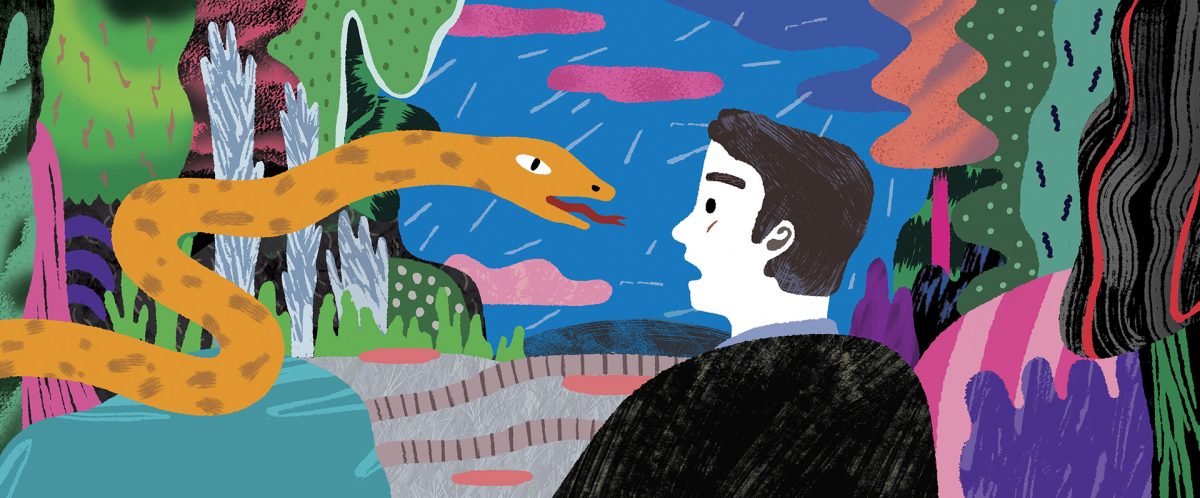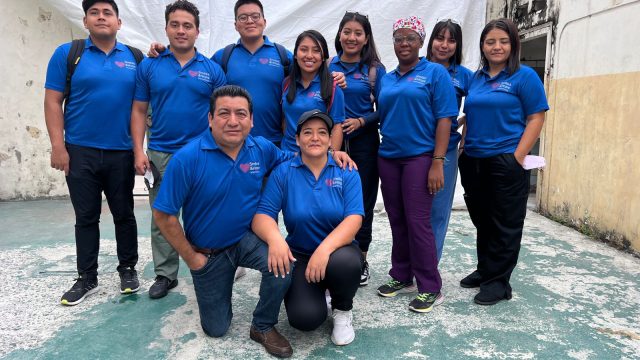Merritt Kellogg reached his arms into the air and had a good stretch. It certainly was peaceful here. The water in the creek was…

The following story was published in KidsView, Summer 2011. This concludes the series we started last month, so make sure you read last month’s first part before this one –Editor
Merritt Kellogg reached his arms into the air and had a good stretch. It certainly was peaceful here. The water in the creek was just a few feet deep and gurgled happily. The sun was shining, and a cool breeze rustled the tall grasses nearby. Placing his Bible on the ground for a pillow, Merritt lay back and closed his eyes. It was a perfect Sabbath—just right for some quiet thoughts, Bible reading, and a good nap. It wasn’t long before Merritt was fast asleep.
Ssssss. The noise penetrated his sleepy head. Ssssss. Foggy with sleep, Merritt tried to remember where he was. Sssssss. Irritated from being awakened from such a nice rest, he reluctantly opened his eyes. As his eyes focused, he realized that just 7 centimeters (3 inches) from his face, staring right at him, was the largest snake he’d ever laid eyes on. The head was 7 centimeters (3 inches) wide and 12 centimeters (5 inches) long, and it was the scariest thing he’d ever seen!
His heart pounding, Merritt jumped five feet straight up in the air. Grabbing a stick, he quickly put an end to the snake. With shaky legs he steadied himself as he examined the now-dead snake. It was 1.8 meters (6 feet) long and 7 centimeters (3 inches) thick. Merritt took no more naps that Sabbath.
It was 1859, and Merritt was 27 years old. He’d lived in Michigan, United States, all his life, but times were hard, and there weren’t many jobs around. So he sold his house and all his belongings—except for two horses; a wagon; and a few pots, pans, and tools—and headed West with his wife and three children.
The gold rush had begun in California in 1849, and many people were traveling to the new frontier to make their fortunes. Merritt met Captain Parks, a man who had also decided to go West for gold. Captain Parks needed to hire a wagon to carry all his supplies, and Merritt took the job with one condition. Merritt, who had accepted the Adventist faith seven years before, was determined never to work on the Sabbath. He wrote a contract and asked Captain Parks and the rest of the people in the wagon train to sign it. They did, agreeing never to travel on Sabbath.
But Captain Parks soon forgot the agreement. When Sabbath came, he still wanted to continue traveling. Merritt reminded him of the agreement, but Captain Parks wouldn’t listen. Captain Parks told Merritt’s wife about how wagons were not safe left alone. Merritt’s wife was so scared that she didn’t want to stay. She begged Merritt to go with the wagon train, but he refused. The Sabbath was more important. So the wagon train left him behind with a lunch, a gun, and his Bible. Here he was now, alone, with a dead snake at his feet and his heart beating like a drum in his chest.
Merritt began to walk in the direction the wagon train had gone. It was about two hours before sunset. Suddenly he saw a wolf. He could see it at a distance, but he knew that if the wolf continued on its path, it would soon pick up his scent. Merritt decided to hide in the bushes and hope that the wolf would change direction. But the wolf sniffed the air and then the ground. It began tracking Merritt, coming closer and closer. Even though Merritt was completely hidden, the wolf seemed to know where he was. Closer. Sniff. Closer. Soon the wolf was almost in front of where Merritt was hiding. Thinking fast, Merritt jumped out of the bushes and fired his gun. Startled, the wolf ran a short distance and then stopped and looked back. Merritt was so nervous that he shot his gun into the air again. This time the wolf ran off out of sight. Heart pounding, Merritt sank to the ground in relief. First a snake, then a wolf. He decided to just stay hidden until the Sabbath ended. It would be safe that way, he hoped.
An hour later two more wolves picked up his trail, and they also began to track toward Merritt’s hiding place. This time he didn’t let them get so close. Firing his gun into the air, both wolves bolted for the woods. Merritt bolted too but in the opposite direction. Reaching the road just as the sun was setting; he took off running and didn’t stop until he had caught up to his wagon train about 10:30 that night.
Captain Parks never asked Merritt to travel on the Sabbath again, and everyone in the wagon train camped during the Sabbath hours. Merritt was glad that he was able to share the importance of the Sabbath with those he traveled with during that journey. He eventually reached California and became the first Adventist to live there.
Years later Merritt went back east to become a doctor. While he was there, he asked the church to send missionaries to California. They did, and Merritt soon joined them. They held many tent meetings, and Merritt also spoke to the people about healthy living. Many were baptized, and a new Seventh-day Adventist church was started.
Merritt Kellogg was one of the Adventist Church’s first pioneers. He was one of 16 children, and two of his brothers are probably more widely known. His brother, John Harvey, was a doctor who built a very large hospital in Michigan in the early 1900s that many famous people went to for better health. John, along with another brother, Will Keith, discovered cornflakes. Will began the Kellogg cereal company—the same company that makes all kinds of cereal today, including cornflakes.








